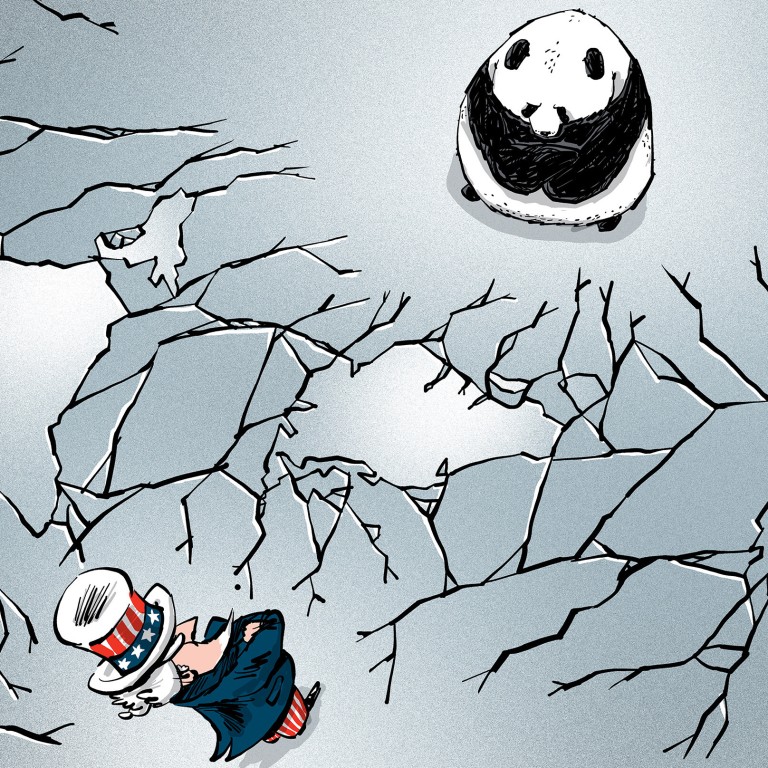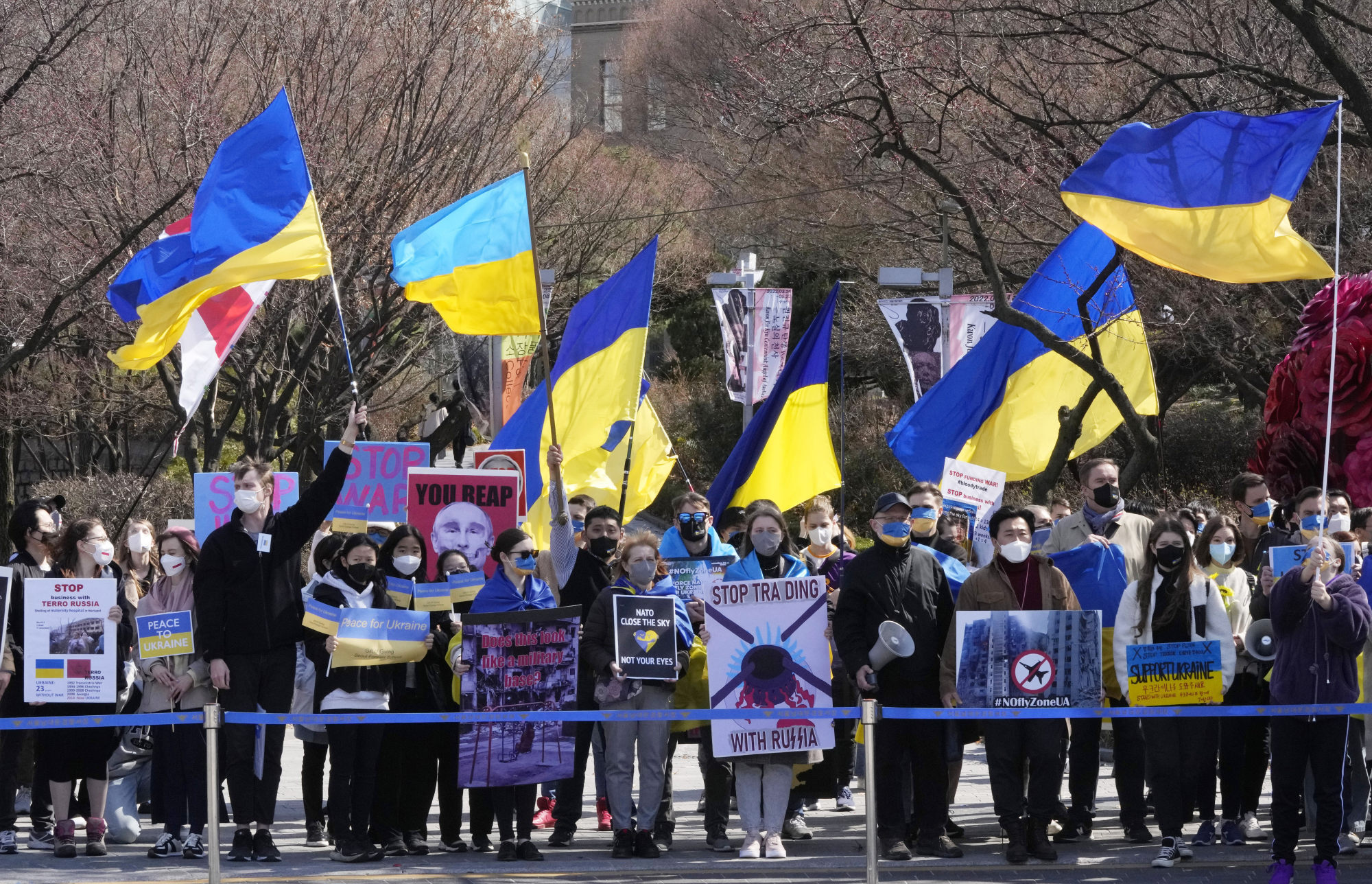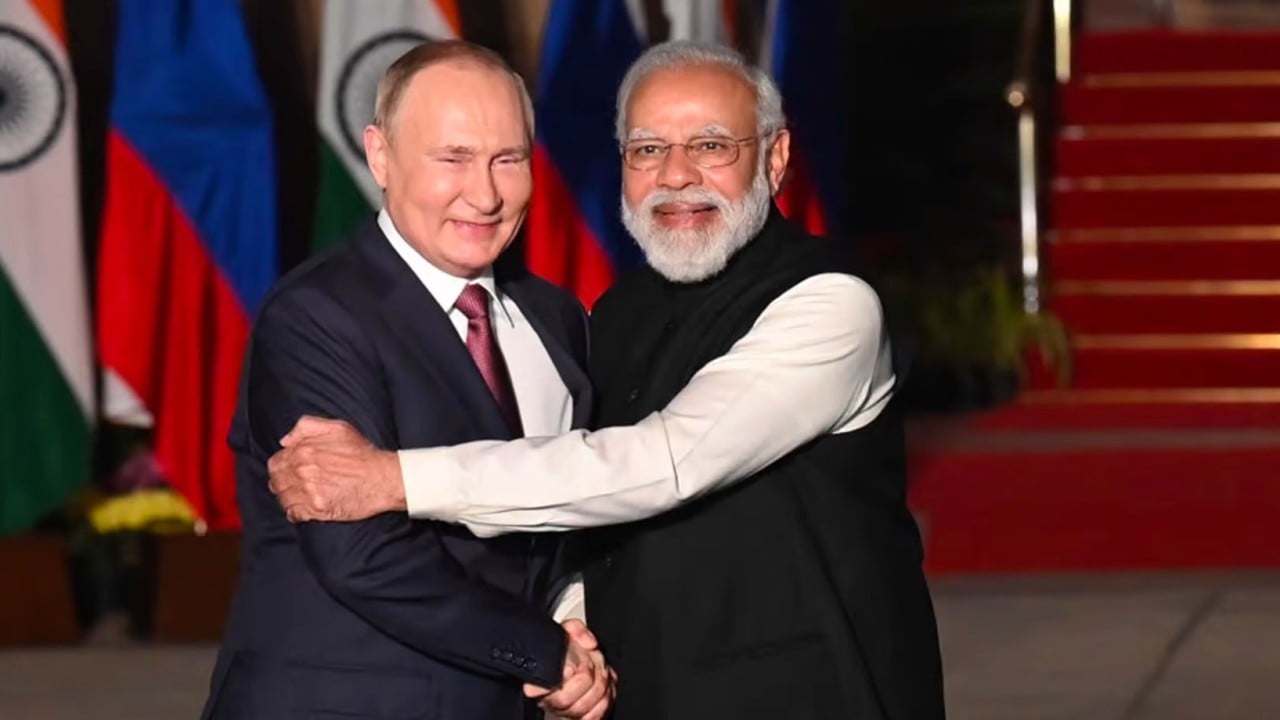
Ukraine war is creating new fault lines in Asia as Singapore, South Korea and India shift positions
- The seemingly faraway conflict in Europe is rearranging partnerships in Asia, as Singapore and South Korea close ranks with the US while India resists pressure to cut trade ties with Russia
- These shifting stances will have consequences for the way the US, China and others approach security in the region
“I envisage a strategy whereby Australia, India, Japan, and the US … form a diamond to safeguard the maritime commons stretching from the Indian Ocean region to the western Pacific,” declared then Japanese prime minister Shinzo Abe in an oft-cited essay upon his return to power in the early-2010s.
Specifically, the Japanese leader called on the four like-minded powers to ensure China doesn’t become the dominant maritime power in adjacent waters. As Abe bluntly put it, his proposed “security diamond” should jointly prevent vital sea-lanes of communications such as the South China Sea from turning into “Lake Beijing”.
To this end, Abe played a critical role in mainstreaming the “Indo-Pacific” geopolitical paradigm, which placed India at the heart of an emerging alliance against a resurgent China. Abe’s proteges at home as well as the Trump and Biden administrations in Washington have largely embraced Abe’s strategic vision in recent years.
Trump repeatedly pressured Europe to step up its own defence spending as part of a more equitable burden-sharing architecture within Nato. A long-standing area of disagreement between Washington and Brussels, however, was Europe’s large-scale energy imports from and cosy investment relations with Russia.

Having successfully built a united front in Europe against Russia, the Biden administration likely envisaged a similar outcome in Asia. As a fellow democracy, India seemed like a natural ally in the West’s new cold war against an aggressive authoritarian superpower.
The US Commerce Secretary Gina Raimondo has described India’s recent actions as “deeply disappointing”, while the US Defence Secretary Lloyd Austin warned India against “investing in Russian [military] equipment”.
Influential US Congressman Joe Wilson, a member of the House Armed Services Committee, was even more emphatic in his criticism of India, lamenting how “gruesomely, our treasured ally India, the world’s largest democracy, is choosing to align itself with the Kremlin”.
India’s reasons for stance on Russia go beyond guns and butter
Just as Delhi prepared to host Russian Foreign Minister Sergey Lavrov, the White House dispatched Deputy National Security Adviser Daleep Singh, the chief architect of the latest anti-Moscow sanctions, to warn India against helping Russia in any effort to “circumvent our financial sanctions”.
In stark contrast, Singapore, another historically “non-aligned” nation, has rapidly emerged as the West’s most reliable partner in Southeast Asia. Not only did it co-sponsor a United Nations General Assembly resolution against Russia, but it also became the only regional state to impose sanctions on Moscow.
Amid blossoming bilateral relations, especially amid the ongoing crisis in Europe, US President Joe Biden has personally praised the Southeast Asian city state for its “principled leadership in supporting the people of Ukraine”. On its part, South Korea, which also joined in Western sanctions against Russia, has also signalled its intent to double down on its defence alliance with Washington.
He is intent on stepping up his country’s geopolitical role in the Indo-Pacific, including through closer cooperation with Quad powers. Moreover, he is also committed to expanding military cooperation with Washington – even welcoming US nuclear bombers, submarines and missile defence systems.
While angering Russia, Singapore’s and Seoul’s steady lurch towards Washington will certainly not go down well in Beijing. Overall, a seemingly faraway conflict in Eastern Europe has created new geopolitical fault lines in Asia with long-term consequences for the future of the regional security architecture.
Richard Heydarian is a Manila-based academic and author of “Asia’s New Battlefield: US, China and the Struggle for Western Pacific” and the forthcoming “Duterte’s Rise”



